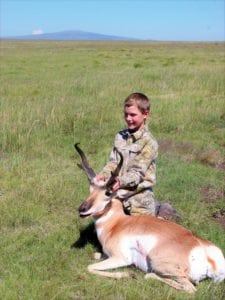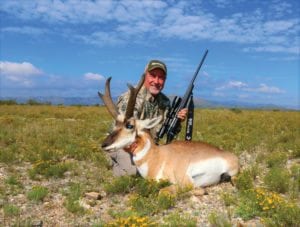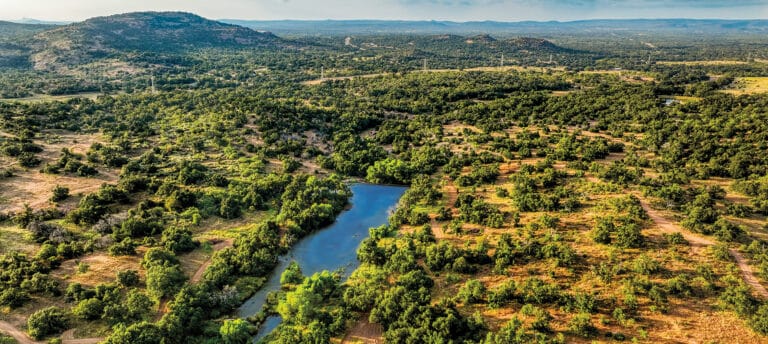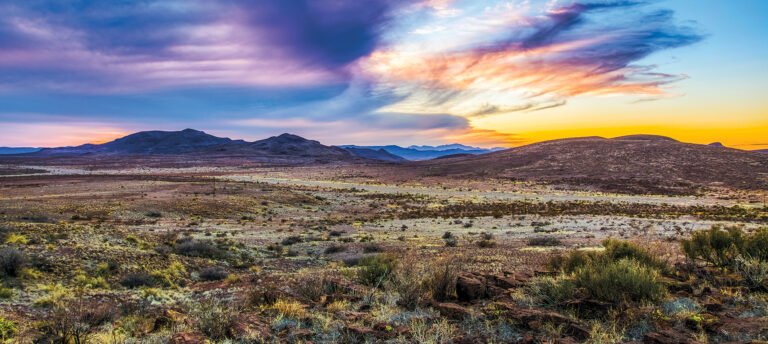The telephone conversation sounded like many that I’d had before. “I’m looking for something that’s a bit more unique than a whitetail hunt. I don’t have much time to devote to the trip, I’d like to avoid a hunt that’s physically demanding since my son is only 12, and would rather not hunt when it may be really cold,” was the query that was posed to me. I asked him if they had ever hunted pronghorns, and he said no. “This is an easy answer, as far as I’m concerned. You need to do a pronghorn hunt,” I exclaimed. He then wanted to know if it would be a high-entertainment type of hunt, as his son was new to hunting and he did not want him to get bored and perhaps lose interest in hunting from the get-go. “Listen, I’ve often described pronghorn hunting as the dove hunting of big-game animals,” I answered back. One of the features of most pronghorn hunts is that you do not have to be in the field an hour before daylight, you can often locate animals throughout the day, it’s not a terribly demanding hunt from a physical or financial standpoint, the camp environment tends to be more relaxed than in some big-game camps, and the hunting style is more action-oriented than sitting in a box blind. Jim booked the hunt and he and Winton had a great time; they’ve since returned to Texas from Florida on several other hunts.

The animal
Though they are often referred to as an antelope, they are not a true antelope and are in fact the only member in the family that they belong. Their proper name is simply pronghorn, not pronghorn antelope. They are most noted as being the fastest land mammal in North America, being able to reach speeds of 50 MPH. Pronghorns are also unique in that they are the only horned animal that has a forked horn and are the only horned animal that sheds the outer sheath of their horns each year. These beautiful prairie animals indeed prefer vast open spaces and are symbolic of the American West.
In Texas, pronghorn numbers in many areas of the Trans-Pecos region began crashing about 8–10 years ago. Though the verdict is still out and may never be fully understood, it appears that the main culprit of this decline was a parasite known as barber pole worms which set up shop in the abomasum of the stomach. After a few years of head-scratching and research, a restoration program was implemented through a cooperative effort between Texas Parks and Wildlife Department, Borderlands Research Institute, private landowners, and other concerned individuals and institutions. Over the last six years, there have been several translocations take place with over 600 pronghorns being captured in the Texas Panhandle and released on various sites near Marfa and Marathon. Though the first releases in 2011 did not do well, principally due to a devastating drought that year, the subsequent releases have fared much better. When you combine the success of these translocation efforts along with relatively good reproductive success of the native herds of pronghorns over the last 3–4 years, you have a pronghorn recovery success story that’s in the making. Pronghorn numbers in the Tran-Pecos have doubled and tripled in some locations over the last 4–5 years and there are reasons to be optimistic that many localized pronghorn herds could perhaps make a full recovery within the next few years in some locations, though it could likely be many years before other locales may reach their pre-decline numbers.

The hunt
Well over 95 percent of pronghorn hunting in Texas takes place on private lands. Beginning a few years ago, the Panhandle region of Texas changed its pronghorn tag issuance program where a hunter who has permission from a landowner simply needs to obtain a pronghorn tag from a designated licensing agent, with no restrictions on how many pronghorn bucks may be taken on a particular tract of private land. For some people, this remains a controversial tag issuance strategy, but others like it just fine. The Trans-Pecos remains a restricted region where pronghorn buck harvest is dictated by a limited tag issuance for each landowner, with a total number of issued tags being determined by location and acreage.
There are some trespass arrangement opportunities that are available for hunters to simply pay the landowner a fee, obtain a tag, and have an opportunity to enjoy a self-guided hunt, with this hunting arrangement being more common in the Panhandle than in the Tran-Pecos. The other option is to book a hunt through an outfitter who has access to private land and landowner tags, and where various services are bundled into the package, such as guiding, lodging, meals, game processing.
Trophy standards vary for Texas pronghorns and the minimum score requirement for Texas Big Game Awards is 70”, well shy of the minimum requirement for Boone & Crockett of 82”. Though Hudspeth County leads the way in terms of number of B&C pronghorn entries, quality pronghorn bucks are taken annually from many other counties in Texas, as well. Another part of the trophy of pronghorns, in addition to the hunting experience and the unique mount, is the delicious meat, especially if the area has little or no sagebrush. The finest game meat I’ve had from a Texas-produced animal is pronghorn meat from the Trans-Pecos.

The outfitter
Wildlife Systems, Inc. (WSI) is a hunting and wildlife management firm that was started in 1987. In addition to offering hunts for a wide variety of other game and exotics, WSI provides quality hunting services for pronghorn in West Texas and New Mexico. These pronghorn hunting packages are set upas 2.5-day programs which provide meals, lodging, guide, and game care. Hunts take place on large private ranches where success rates approach 100 percent. Named the Dodge Outfitter of the Year several years ago, from a cast of over 400 hunting operations in North America, WSI has a long-standing reputation as a reliable service that provides quality hunting opportunities on over ¾ million acres of private land.
For additional information on hunting with WSI, check out their website at wildlifesystems.com or call (325) 655-0877.


